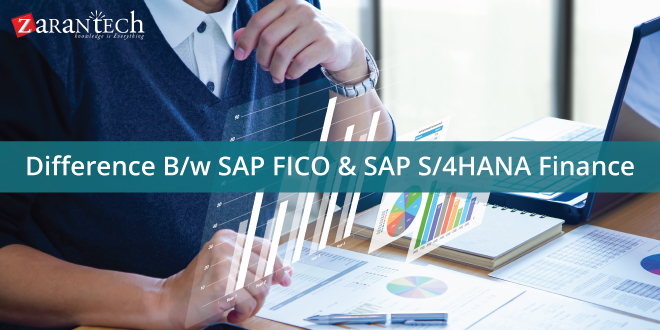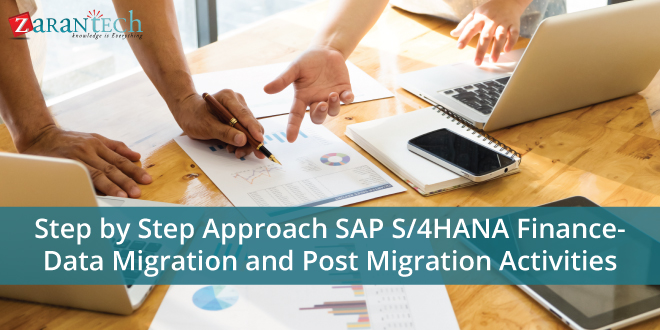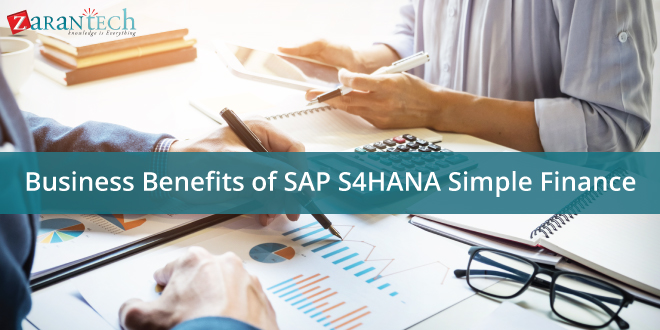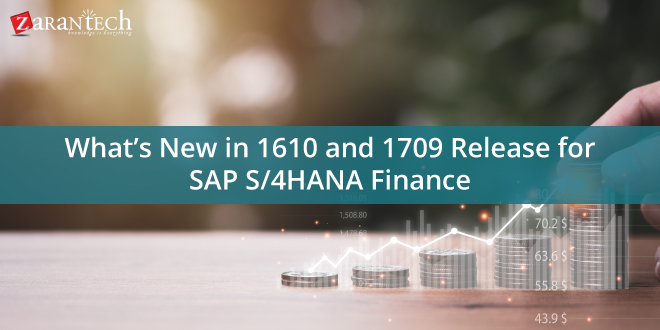Things that You Should Know about Finance in S/4HANA 1610
Category: SAP S/4HANA Finance Posted:Dec 13, 2017 By: Ashley Morrison
Today’s Digital World S/4HANA plays a crucial role in fulfilling SAP customer’s needs. In 2014, simple innovations were introduced in the area of Finance by SAP, and this new product was initially known as ‘Simple Finance’. In 2015 SAP renamed Simple Finance to S/4HANA Finance. By doing this, SAP launched heterogeneous naming over various product lines. Simultaneously it created huge confusion with various release numbers.
S/4HANA Finance is composed of finance innovations with the existing systems so that everything with logistics will remain the same. The complete functionality of S/4HANA Finance 1605 is included in SAP S/4HANA 1610. For this product the migration effort is less when gauged with S/4HANA which indicates that S/4HANA 1610 and S/4HANA Finance 1605 are in sync only in terms of Finance where few minor differences are listed below:
Checkout the Article-SAP HANA, S/4HANA, and S/4HANA Finance in a Nutshell
Single Source of truth and merging of all accounts into GL account
The new table ACDOCA will reserve all actual line items thereby eliminating any redundant, aggregate or total tables. All dimensions of CO, COPA, GL, AA and ML will be included in ACDOCA. Where ACDOCA includes multidimensional GL, 999,999 line items and custom defined fields, parallel ledgers, parallel currencies. The challenges of collecting several tables content to showcase the truth and reuniting the various level of information stored in the different components or tables of SAP.
All actual line items can be reserved in a single table by combining secondary and primary cost elements. Now up to 10 parallel currencies per ledger can be accessed in S/4HANA 1610. For all types of currencies, real-time conversion is also possible, Zero balance per document is guaranteed for each currency and CO-area currency is now calculated for all accounts (also non-cost element). There is a significant enhancement in S/4HANA 1610 due to the effect of parallel valuation functionality. Now SAP delivers two options to load multiple valuations:
In parallel single-valuation ledger parallel valuation is updated
- For each valuation, there is a separate ledger
- Based on different regulations there exist a transparent separation of posting and reporting
In multi-valuation ledger parallel valuation is updated
- Separate amount columns in the same ledger
- Reduce memory footprint
- Reduce effort and time for closing
Checkout the Article-Users Should Know About: SAP S/4HANA Sourcing & Procurement
SAP mainly focuses on the enhancement and integration of Account based COPA with help of S/4HANA. It is a preferred type of Profitability Analysis. Costing Based profitability analysis can be used in parallel, but there will be no unification with the Universal Journal (ACDOCA table).
List of enhancements on Account-Based profitability analysis are listed below:
- A split of Cost of Goods Sold on multiple accounts based on cost component split. This is done during the posting of the Goods issue.
- The split of production variances on multiple accounts which were done at order settlement.
- Three new quantity fields are given in the line items and a BAdI for conversion of the logistical quantities to common quantities in Finance.
- Real-time derivation of market segment information from cost postings (Cost Center, order etc.)
The limitations on Account-Based profitability analysis are,
- Few sales conditions which are not posting to GL (statistical) are not bearable
- The realignment of characteristics which change after posting is relatively supported
- Creation of sales order generates expected revenue, COGS etc.
Attributed profitability segments
Attributed profitability segments is one of the greatest enhancements in Profitability Analysis with a few extra configuration steps like ‘Attributed PA segment’ can be operated.
Consider an example of a debit memo request in a time and material service order with a settlement rule for settlement to COPA. Generally the debit memo request consists of account assignment to the service order without any profitability segment. Indicates that until the service order is resolved to COPA, profitability segment data is not available. This new characteristics consists of attributed assignment to a profitability segment and real account assignment to the service order.
Event-based revenue identification
Now, the revenue recognition process is completely integrated with the Universal Journal and there is no more separate storage area for Revenue Recognition data. The costs and revenues are identified as and when they occur. The introduction of the source document will create two postings i.e is an arrival for the initial costs, revenue recognition posting.
Bank account management
In S/4HANA the fundamental functions of the Bank Account Management functionality of Cash Management is introduced in to the core known as Bank Account Management Lite.
Following are the important features and differences of the bank account setup and old house bank:
- Signatory
- Groupwise account management
- Opening and Closing with approval process
- Easily maintain bank accounts
- Overdraft Limit
The conclusion
SAP S/4HANA can assist in changing your enterprise, providing a tailored service or product to an audience of one across the globe. The opportunity does exist to completely alter the business processes and achieve the digital transformation of your business with better automation and real-time visibility.





 99999999 (Toll Free)
99999999 (Toll Free)  +91 9999999
+91 9999999